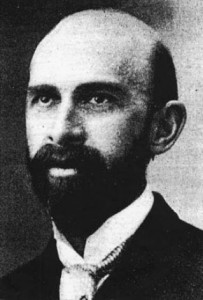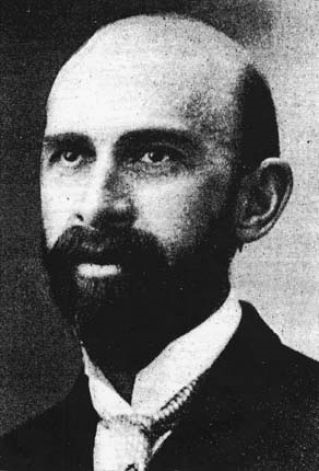The Fall 2012 Tidings covers the history of Napa County. The following article is a brief biography of Luther Turton, “Napa’s Architect” who designed numerous buildings throughout California. To get your copy of Tidings, become a member today!
 Luther Mark Turton is one of the best known Napa Valley architects. Turton was born in North Bend, Nebraska, on May 22, 1862 to George J. and Harriet B. Turton. George, born about 1830, had immigrated from England in 1856 and married New York native Harriet a year later. The Turton family relocated to the Browns Valley area in 1876 when Luther was fourteen. He eventually graduated from Napa Collegiate Institute in 1882 with a Master’s Degree. After completing his formal education, he then moved to San Francisco and entered the office of McDougal & Son as an apprentice architect. By 1887 Turton had completed his apprenticeship and opened his own firm in Napa.
Luther Mark Turton is one of the best known Napa Valley architects. Turton was born in North Bend, Nebraska, on May 22, 1862 to George J. and Harriet B. Turton. George, born about 1830, had immigrated from England in 1856 and married New York native Harriet a year later. The Turton family relocated to the Browns Valley area in 1876 when Luther was fourteen. He eventually graduated from Napa Collegiate Institute in 1882 with a Master’s Degree. After completing his formal education, he then moved to San Francisco and entered the office of McDougal & Son as an apprentice architect. By 1887 Turton had completed his apprenticeship and opened his own firm in Napa.
In the 1926 book History of Solano and Napa Counties, Luther Turton was described as a man who “had a natural aptitude for [architecture] and the quality of his drawings soon attracted favorable attention. The first plan which he drew after coming to Napa was for a women’s dormitory for the Collegiate Institute, and from that time on, as long as he remained actively engaged in this work, he was connected with the building of most of the important structures in this locality. He was [the] architect for the Winship building, the Semorille [sic] building, the H. Schultz block, the Behlow block and the Miglavacca [sic] block, as well as many fine residences here. He also was the architect on a business block erected in San Francisco by Henry Brown of Napa, and drew plans for buildings in Coluso [sic], Yolo and Solano counties, as well as for two bank buildings in Vallejo and the St. Helena union high school. He was superintendent of construction on the Bank of Napa building, the First National Bank building…and two grammar school buildings recently erected in Napa.” Turton also designed the Kahn-Voorhees House at 1910 First Street, the Noyes Mansion at 1750 First Street, the Noyes-York House at 1005 Jefferson Street, the Hackett House at 2109 First Street, the Migliavacca House 1475 Fourth Street, and his own home at 1767 Laurel Street. Among the other commercial buildings he designed are the Goodman Library (home to Napa County Historical Society and Napa County Landmarks) and three mansions for the live-in doctors at Napa State Hospital.
His architectural personality “straddles the extravagant medievalism of the late nineteenth century and the quieter classicism of the early twentieth century,” wrote Dave Weinstein in his 2006 book Signature architects of the San Francisco Bay Area. Juliana Inman, whose cottage is featured on this year’s Holiday Candlelight Tour, said, “Turton uses shared space to make interiors seem more expansive. He will borrow space from a hallway, an entryway, or have parlors flow into each other so that they appear much more spacious and grand than they otherwise would seem.”
In 1893 he married Lillie A. Bell from Santa Rosa via Guelph, Ontario, Canada, and soon after had a daughter, Lois Belle. The Turtons were very active in the local community; they were members of the temperance movement, Knights of the Maccabees, Eagle Cycling Club, the Napa Grange, and the local Methodist-Episcopal Church, which he also designed. The History of Solano and Napa Counties described him as a man much like his architectural designs, “[quiet] and unostentatious in manner, he nevertheless left a strong impress of his individuality upon all with whom he associated. He possessed the happy faculty of seeing the beautiful things of the world, and he enjoyed nature, loved flowers, appreciated noble traits in mankind and hand an optimistic outlook on life, so that to know him was to admire him.” Turton passed away from natural causes on April 27, 1925.


